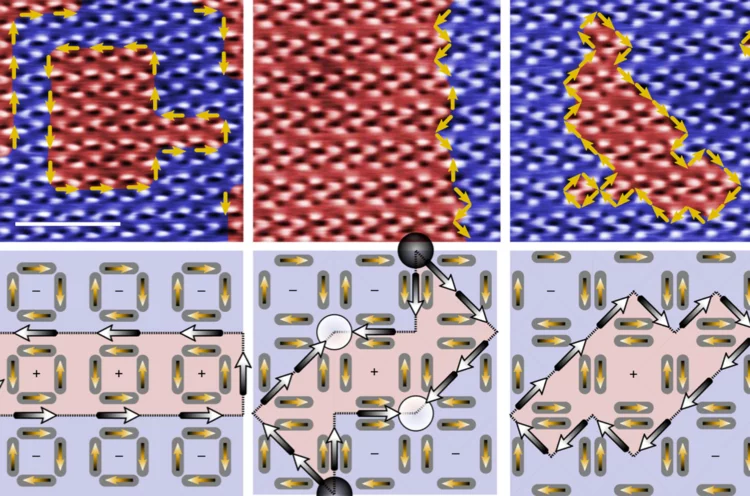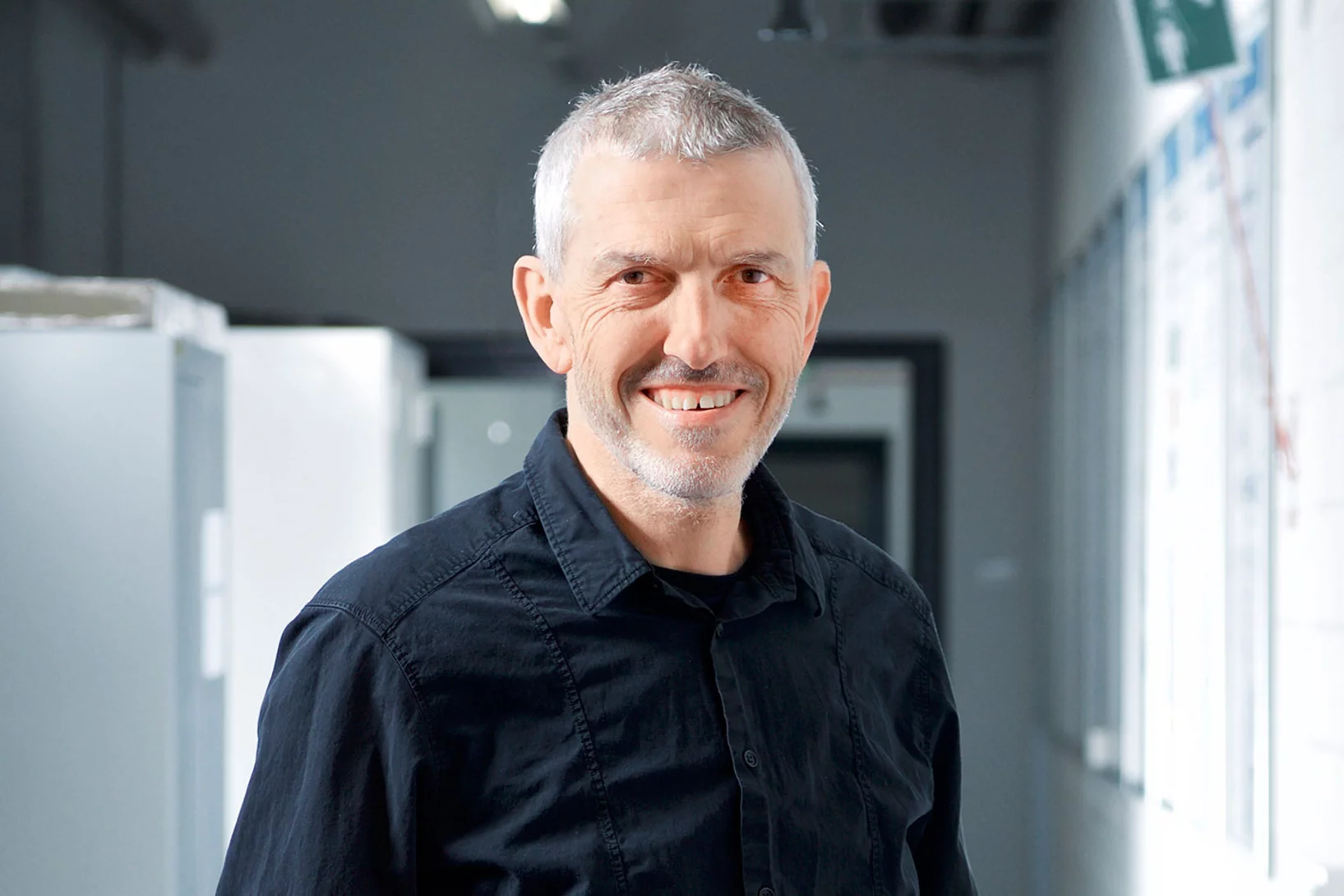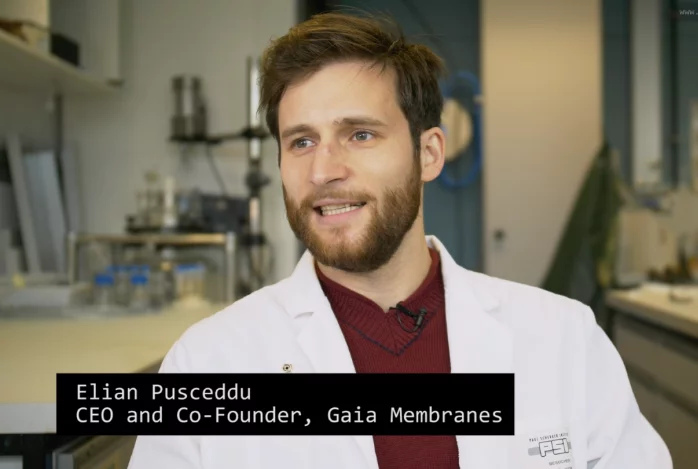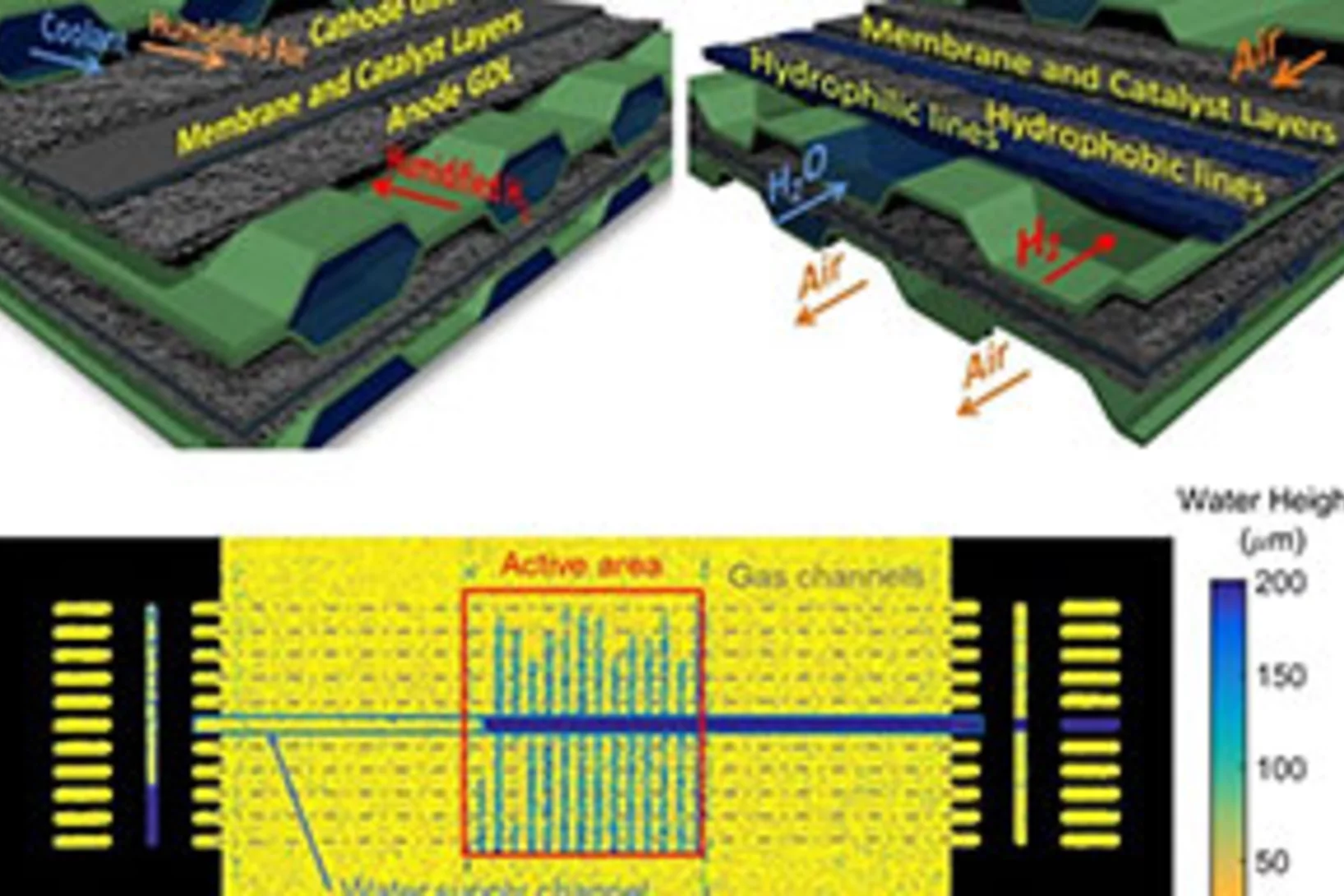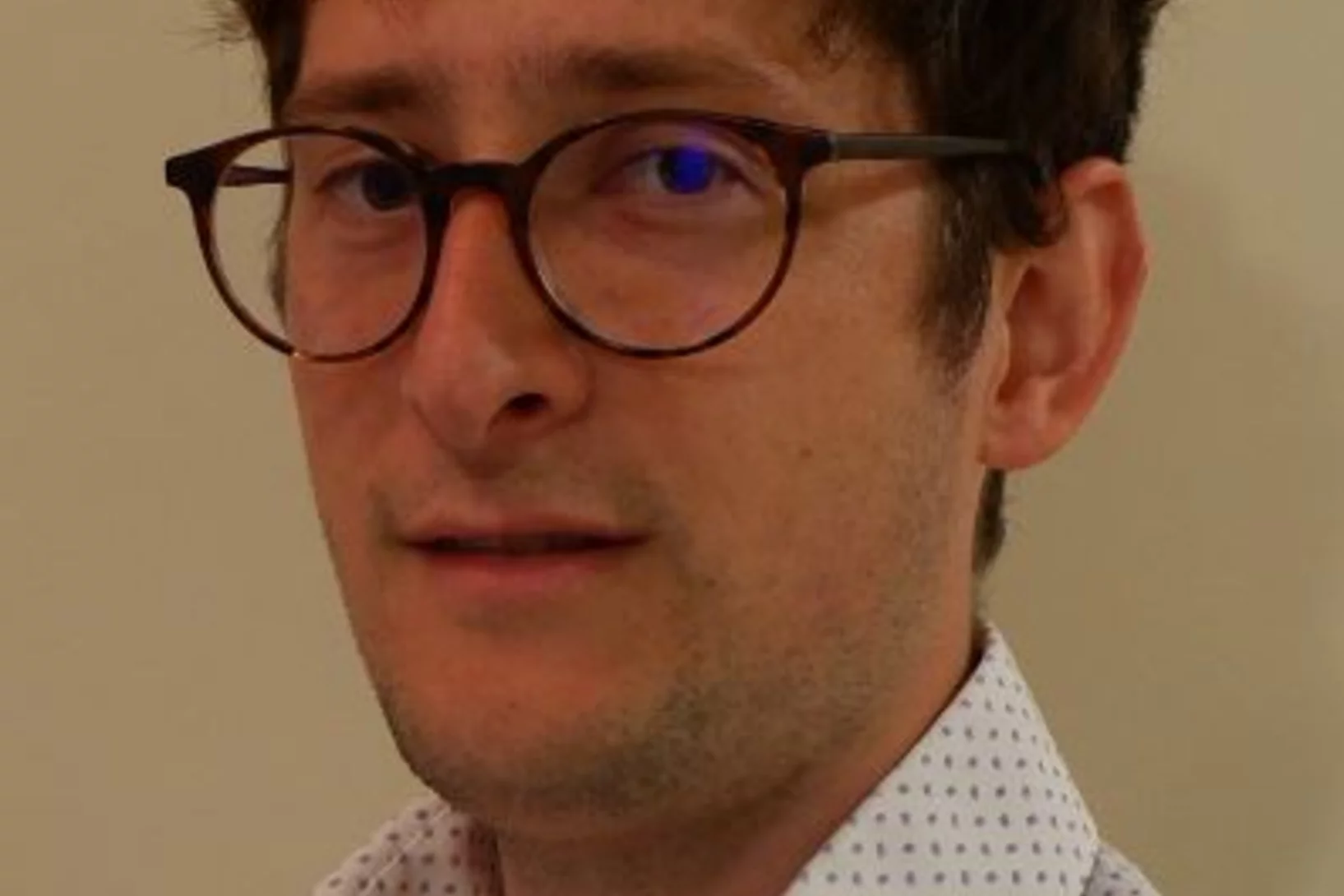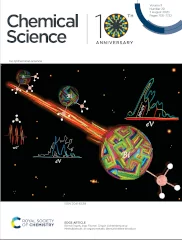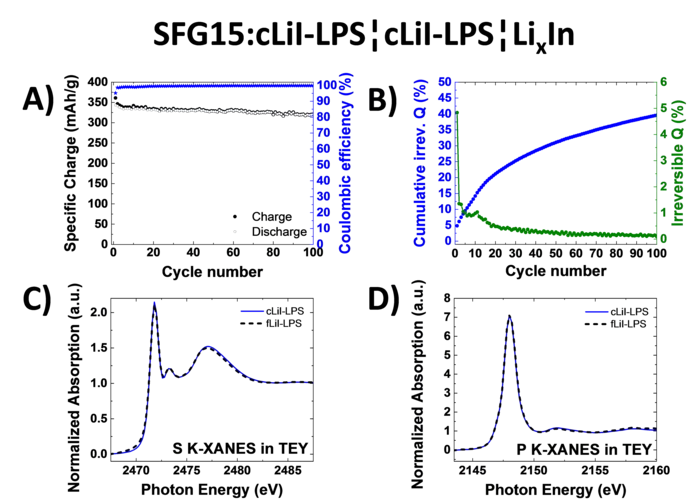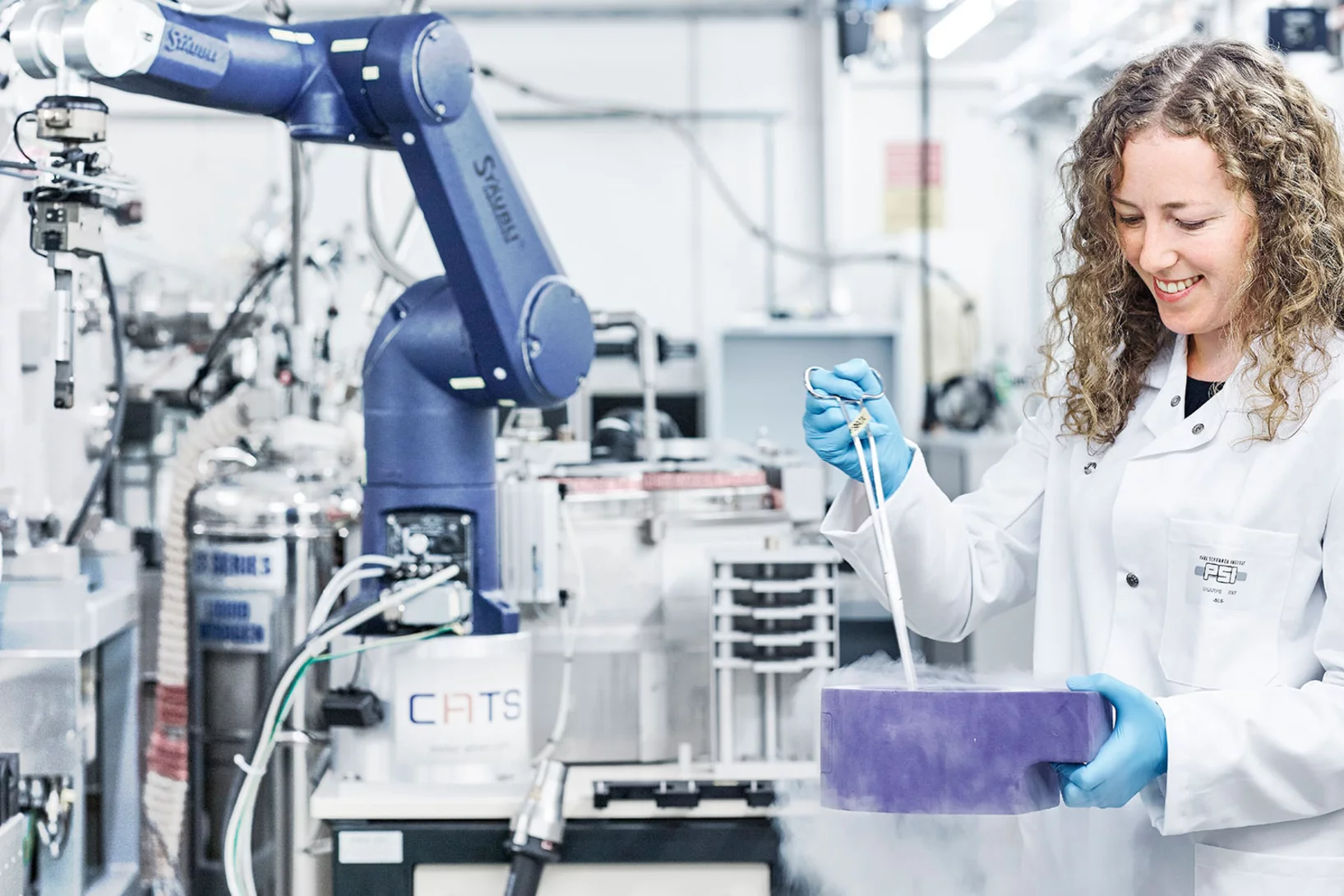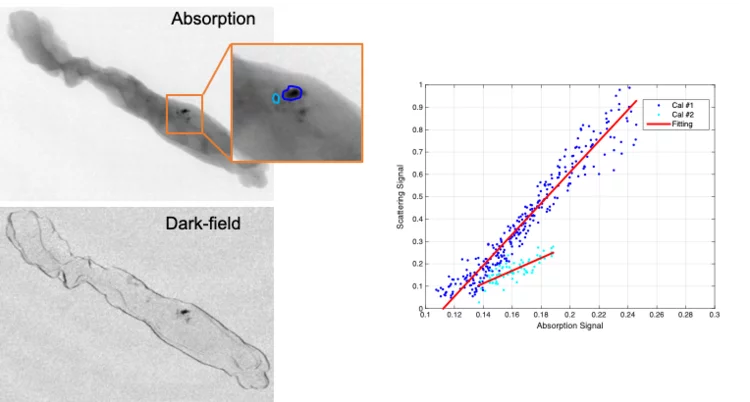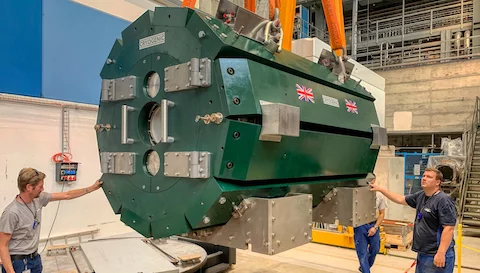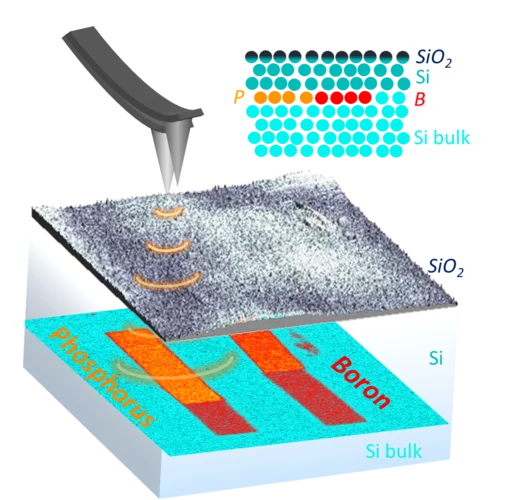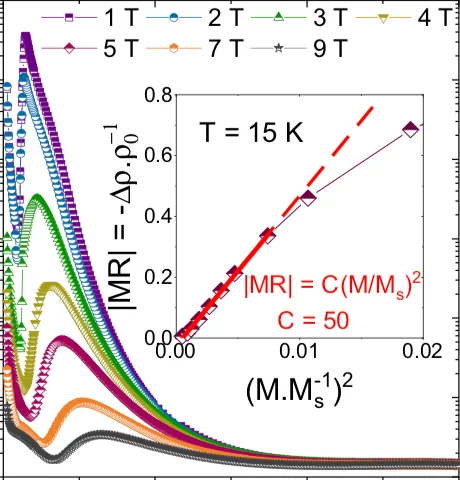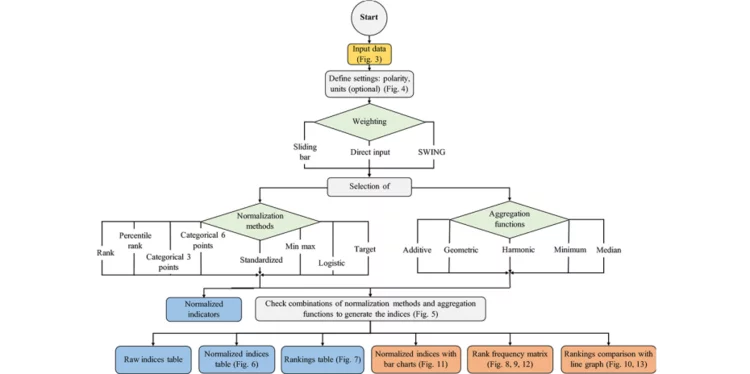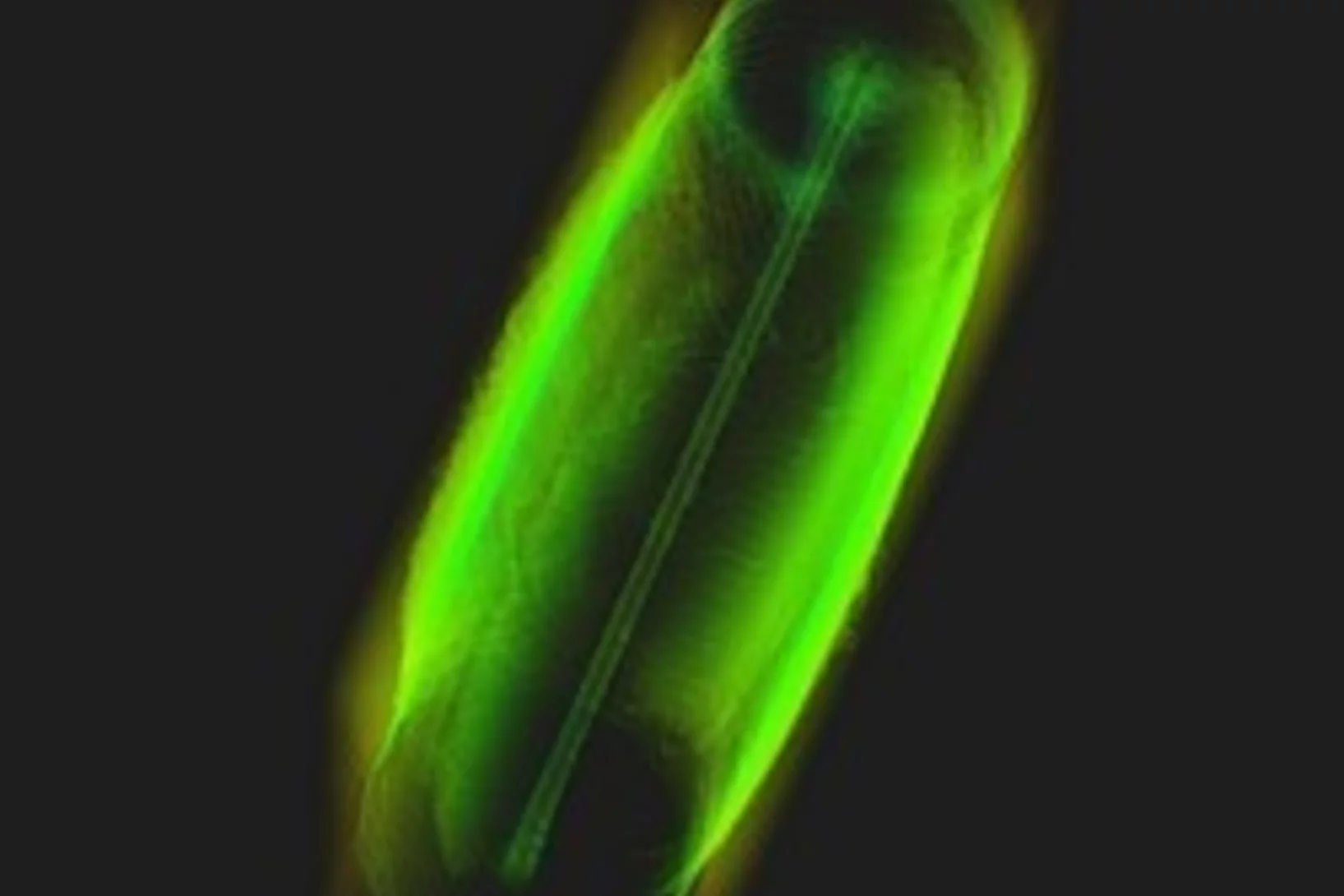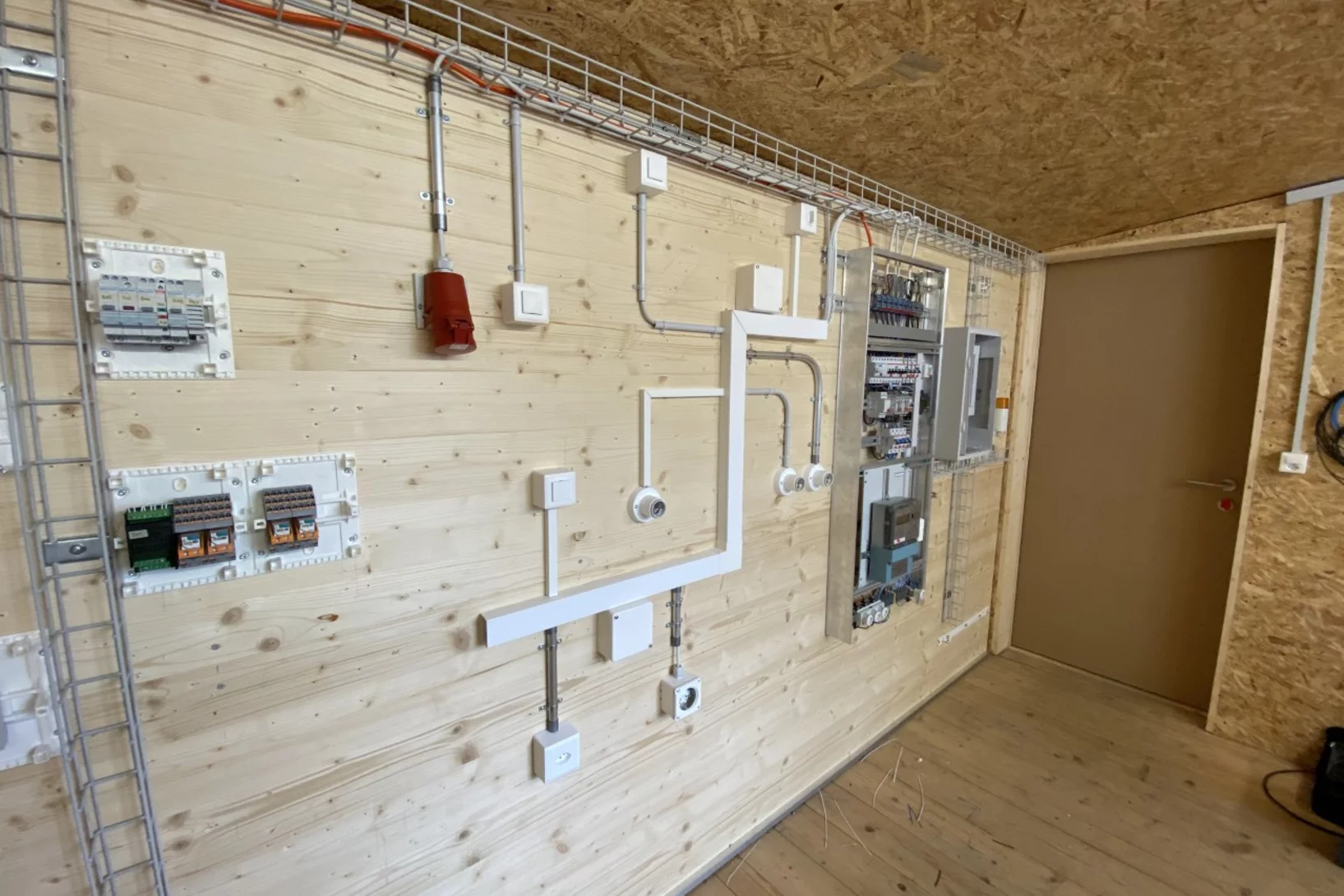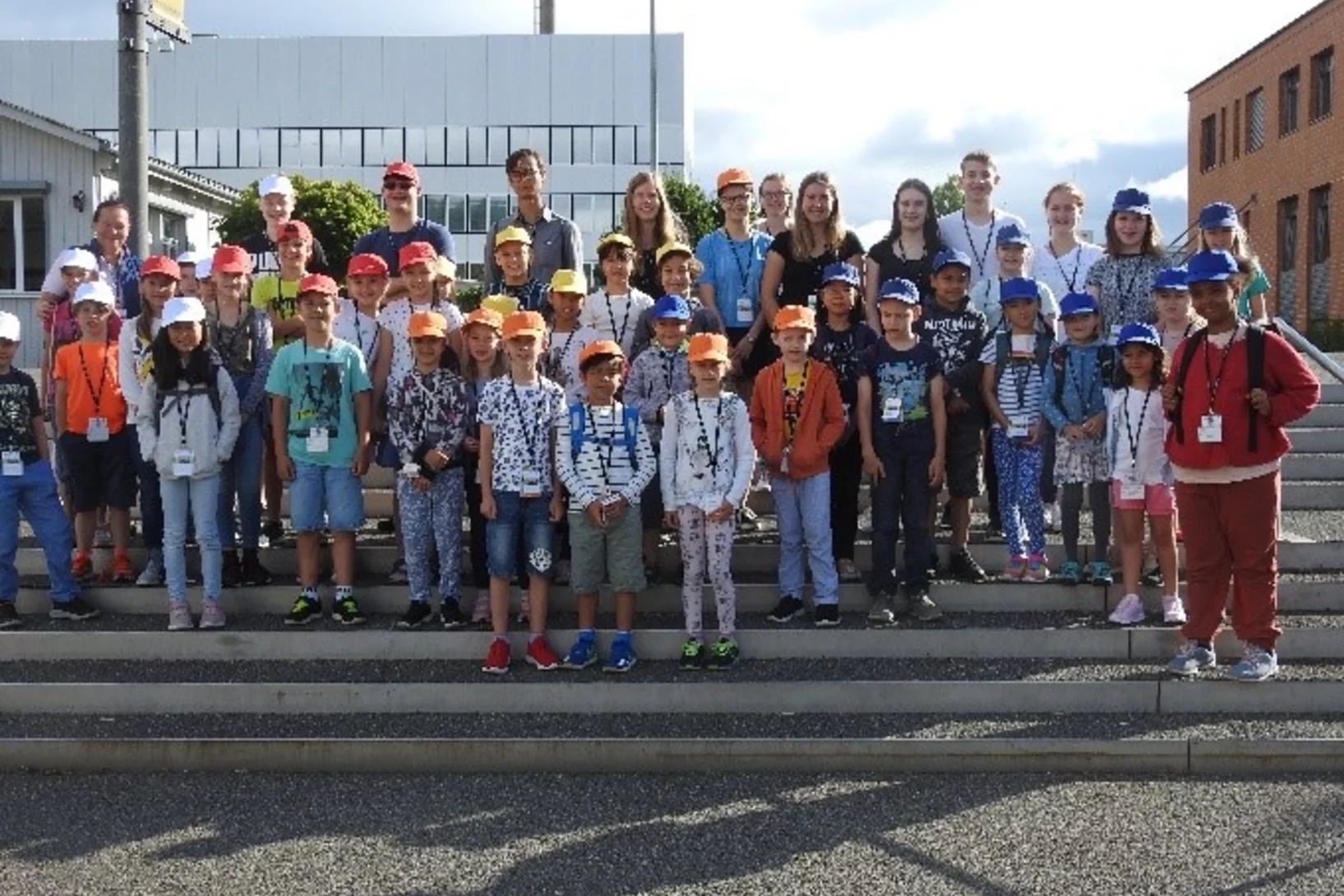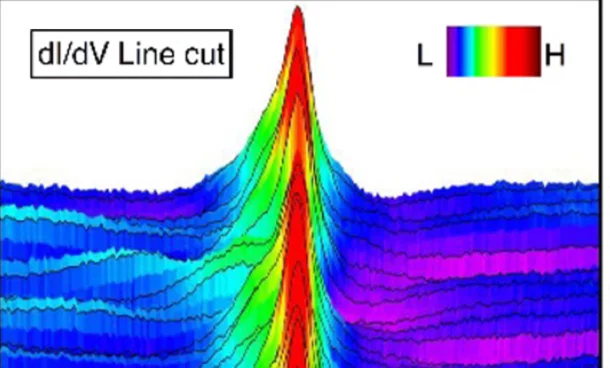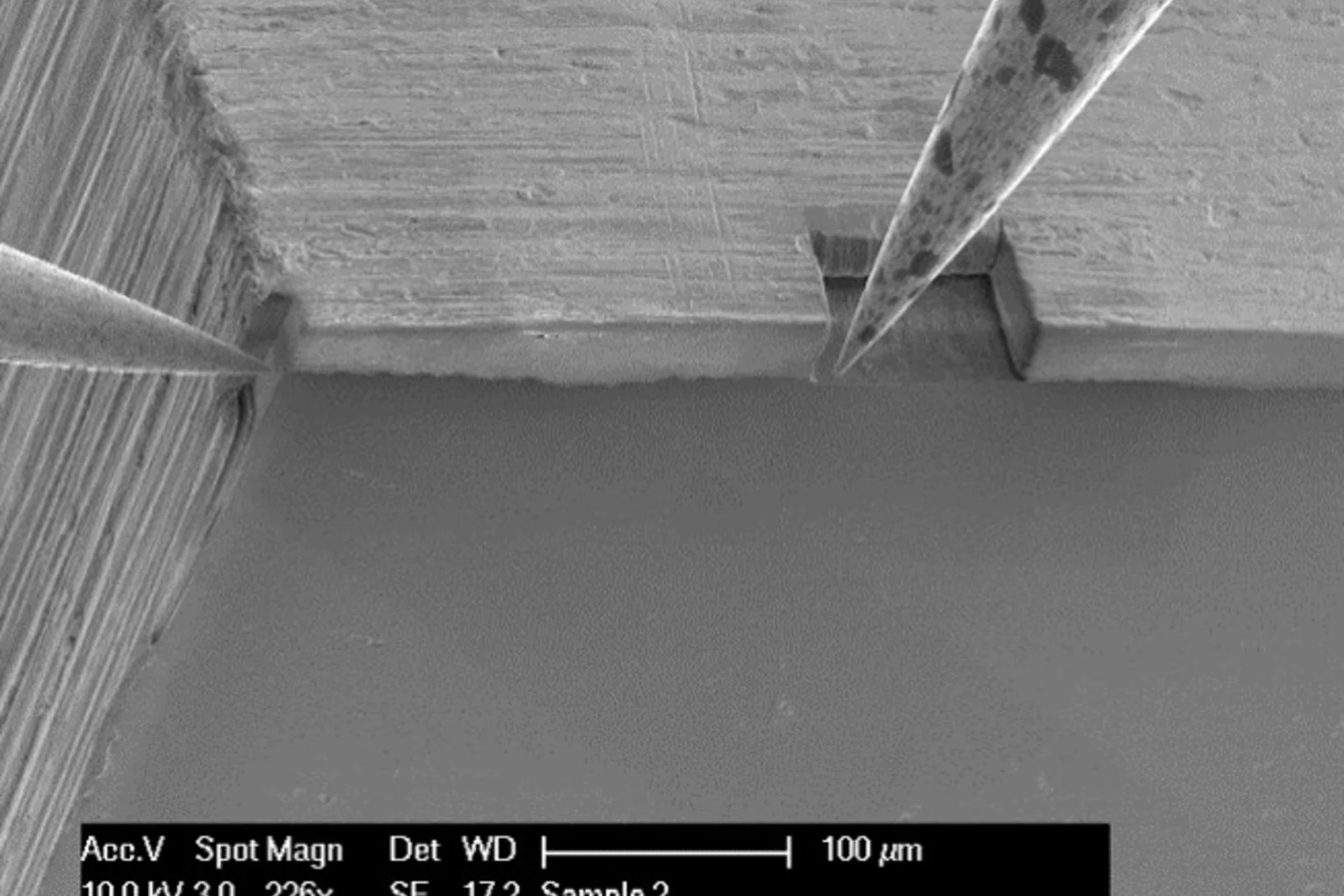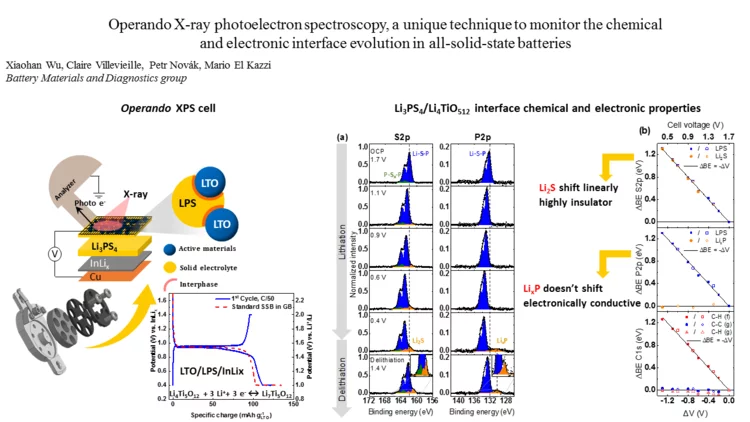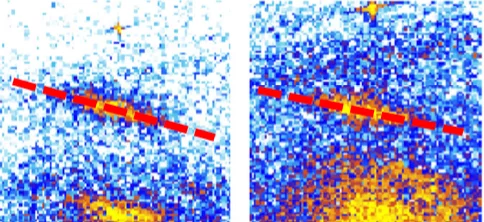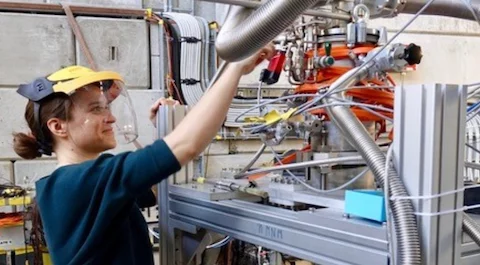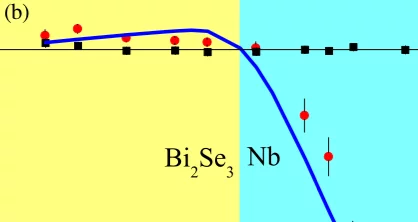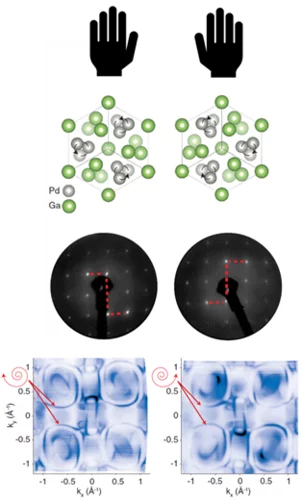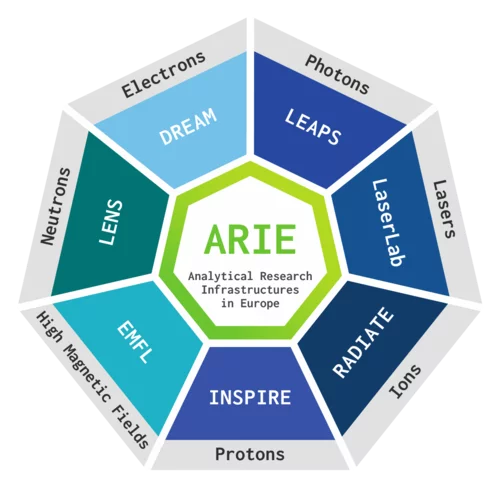Shifting away from nuclear energy, expanding solar and wind power, generating energy from biomass, reducing energy consumption. Switzerland is committed to becoming climate-neutral by 2050. An ambitious goal, which has become more urgent than ever due to the increasingly challenging geopolitical situation. How can a sustainable and resilient energy supply for Switzerland be established over the coming years? What's the optimal way to use renewable energy sources? What new technologies are especially promising? At PSI, researchers are seeking answers to these crucial questions.
Relation between microscopic interactions and macroscopic properties in ferroics
The driving force in materials to spontaneously form states with magnetic or electric order is of fundamental importance for basic research and device technology. The macroscopic properties and functionalities of these ferroics depend on the size, distribution and morphology of domains; that is, of regions across which such uniform order is maintained. Typically, extrinsic factors such as strain profiles, grain size or annealing procedures control the size and shape of the domains, whereas intrinsic parameters are often difficult to extract due to the complexity of a processed material. Here, we achieve this separation ...
Coronavirus advice: Ventilate, ventilate, ventilate!
SARS-CoV-2 might be transmitted via aerosols, that is, through the air. Researchers point this out in the journal Clinical Infectious Diseases. André Prévôt from PSI co-signed the publication. In this interview, he explains which precautionary measures he recommends.
Phase contrast microtomography reveals nanoparticle accumulation in zebrafish
Metal-based nanoparticles are a promising tool in medicine – as a contrast agent, transporter of active substances, or to thermally kill tumor cells. Up to now, it has been hardly possible to study their distribution inside an organism. Researchers at the University of Basel in collaboration with the TOMCAT team have used phase contrast X-ray tomographic microscopy to take high-resolution captures of the nanoparticle aggregation inside zebrafish embryos.
The study was published in the journal Small and featured on the cover of its current issue.
From the lab to the market: deep tech entrepreneurs talk about their journey
Although Switzerland is championed as a world leader at innovation, it is less celebrated for its start-up culture. Does the country have what it takes to produce, finance and nurture the technology of the future? A new documentary explores that question. Our spin-off Gaia Membranes talks about their experiences as a swiss startup.
How to increase the power density of Polymer Electrolyte Fuel Cells with evaporative cooling
A system of evaporative cooling for Polymer Electrolyte Fuel Cells (PEFCs) has been developed at PSI, based entirely on one simple, yet effective change of one of the fuel cell components. Our team at the Electrochemistry Laboratory has demonstrated how this single change allows to operate a cell without the need of bulky and costly external humidifiers. Additionally, the proposed design has the potential to increase the power density of a PEFC stack by up to 35% due to the sparing of the space usually dedicated to the convective coolant circulation.
Welcome to Fabian Mahrt
We gladly announce that Fabian Mahrt has started to work as Postdoc in the Laboratory of Environmental Chemistry. He formally joined the Surface Chemistry group on 1 August 2020 but has started his work actually at the University of British Columbia (UBC), Canada.
Methylbismuth: First observation of an organometallic biradical reactive intermediate
Open shell organometallic bismuth are promising agents for catalytic applications, but difficult to characterize due to their high reactivity. The simplest methylbismuth (Bi-CH3), a biradical species, was in-situ synthesized and spectroscopically characterized for the first time. Electronic and thermochemical properties could be obtained, which will guide future synthetic applications.
4 times compression factor for tomographic data feasible
In a recent study, TOMCAT has shown that lossy compression by a factor of at least 3 to 4 of raw acquisitions generally does not affect the reconstruction quality and that higher factors (six to eight times) can be achieved for tomographic volumes with a high signal-to-noise ratio as it is the case for phase-retrieved datasets. This finding is relevant to current challenges on large tomography data management and storage especially at synchrotron facilities. The results of this study was published in Journal of Synchrotron Radiation.
Study of Graphite Cycling in Sulfide Solid Electrolytes
Nowadays, most of the commercial Li-ion batteries employ graphite as the active material in negative electrodes. In the race for the next-generation Li-ion batteries, tremendous research efforts in academia and industry are carried out to replace the current flammable liquid electrolyte with a solid electrolyte, which could improve both, the batteries safety and energy density. Our study investigates two different sulfide-based solid electrolytes, 0.75Li2S-0.25P2S5 (LPS) and 0.3LiI-0.7(0.75Li2S-0.25P2S5), in combination with graphite and discloses the stability of the graphite-solid electrolyte interface. Optimizing the electrode morphology is the key to enhance the rate capability of all-solid-state cells. Using the special tender X-ray range allows chemical characterization of sulfur, phosphor and iodine.
Covid-19 research: Anti-viral strategy with double effect
Frankfurt scientists identify a possible weakness of the SARS-CoV-2 virus. They carried out part of their measurements at PSI's Swiss Light Source SLS. The research results are published this week in the scientific journal Nature.
Looking into the hints of early breast cancer detection
Microcalcifications are the most important indicator in the diagnosis of early breast cancer. The team of X-ray tomography group, in collaboration with Kantonsspital Baden, has carried out a reader study to characterize microcalcifications non-invasively using grating interferometry. This study reveals a potential way to discriminate benign and malignant lesions at early stage.
Mu3e magnet arrived at PSI
After almost three years of planning, design and construction, the 31-ton, 2.6 Tesla superconducting magnet for the Mu3e experiment arrived today at PSI. The magnet delivery is an important milestone in the Mu3e experiment at the Laboratory of Particle Physics LTP, which will search for New Physics in muon decays over the next years.
The Mu3e Magnet arrived at PSI
We have received our solenoid magnet.
The tiniest secrets of integrated circuits revealed
New research has demonstrated that the secrets of the tiniest active structures in integrated circuits can be revealed using a non-destructive imaging technique. The breakthrough required the efforts of an international team of scientists from JKU and Keysight Technologies (Austria), ETH/EPFL/PSI and IBM Research - Europe (Switzerland) and from UCL (UK).
Colossal magnetoresistance in a nonsymmorphic antiferromagnetic insulator
Here we investigate antiferromagnetic Eu5In2Sb6, a nonsymmorphic Zintl phase. Our electrical transport data show that Eu5In2Sb6 is remarkably insulating and exhibits an exceptionally large negative magnetoresistance, which is consistent with the presence of magnetic polarons. From ab initio calculations, the paramagnetic state of Eu5In2Sb6 is a topologically nontrivial semimetal within the generalized gradient approximation (GGA), whereas an insulating state with trivial topological indices is obtained using a modified Becke−Johnson potential.
A tool to build and assess indices
Researchers from the Future Resilient Systems programme present a multiple criteria decision analysis (MCDA) software that supports the dynamic shaping and evaluation of indices.
Miniaturized fluidic circuitry observed in 3D
The team of Prof. Thomas Hermans at the University of Strasbourg in France managed to create wall-less aqueous liquid channels called anti-tubes. Thanks to X-ray phase contrast tomography at the TOMCAT beamline those anti-tubes could be observed in 3D. The exciting results were published in Nature on May 6, 2020.
Vorbereitung auf die praktische Prüfung
Neuer Montageübungsraum hat sich bewährt!
Einfache Experimente zeigen: so gut schützen uns Masken und andere Materialien
Spätestens seit Corona ist der Maskengebrauch auch in der Schweiz im Alltag präsent. Doch wie gut können wir uns und andere mit verschieden Materialien vor kleineren und grösseren Partikeln schützen? Das alljährlich durchgeführte PSI Feriencamp bietet Kindern einen spannenden Einblick in die faszinierende Welt der Forschung. In diesem Jahr gingen Kinder an einer Projektstation genau dieser Frage nach. Dabei untersuchten sie, wie gut verschiedene Materialien die im Labor generierten Partikel zurückhalten. Es wurden Textilmasken (im Handel erhältlich, wiederverwendbar, nicht FFP2-zertifiziert), Chirurgenmasken (Einwegmasken, FFP2-zertifiziert), Teefilter, Kaffeefilter, Papiertaschentuch und WC-Papier getestet, und es wurde klar, Maske ist nicht gleich Maske.
Many-Body Resonance in a Correlated Topological Kagome Antiferromagnet
We use scanning tunneling microscopy to elucidate the atomically resolved electronic structure in the strongly correlated kagome Weyl antiferromagnet Mn3Sn. In stark contrast to its broad single-particle electronic structure, we observe a pronounced resonance with a Fano line shape at the Fermi level resembling the many-body Kondo resonance. We find that this resonance does not arise from the step edges or atomic impurities but the intrinsic kagome lattice.
Feriencamp 2020
Am diesjährigen Feriencamp nahmen 36 Kinder von PSI-Mitarbeitenden teil und verbrachten eine interessante und tolle Woche am PSI. Herzlichen Dank allen Helfern, welche dieses Camp erst ermöglichen!
Hydrogen uptake into Zr-based fuel claddings
At the hot surface of a fuel rod cladding in the reactor water, the water is partially dissociated in hydrogen and oxygen, leading to corrosion of the cladding and to the uptake of a part of the created hydrogen. Hydrogen in solid solution and in precipitated form changes the mechanical properties of the cladding tube. The uptake of the hydrogen through the dense oxide layer is unclear. The structure and physical properties of the oxide near the metal-interface is critical The resistivity of the oxide increases with distance from the interface. Nb-containing alloys show lower resistivity in the oxide close to the metal interface, and exhibit a lower hydrogen pick-up. The time in the reactor is an important factor, leading to increasing resistivity in the oxide close to the metal interface, and a higher hydrogen uptake late in life.
Relevance of the findings: considering resistivity, the model of hydrogen uptake is better understood, revealing hints for further cladding development.
Operando X-ray photoelectron spectroscopy, to monitor the chemical and electronic interface evolution in all-solid-state batteries
Degradation of the solid-electrolyte interface occurring during cycling is currently one of the most challenging issues for the development of all-solid-state batteries. Here we designed a unique electrochemical custom made cell for operando X-ray photoelectron spectroscopy (XPS) capable of maintaining high mechanical pressure with reliable electrochemistry and able to monitor in real-time the surface (electro-)chemical reactivity at the interfaces between the different composite.
Beam test of the data acquisition in Mainz
Resuming beam operations, we have the opportunity to test a part of the data acquisiston sytem using the electron beam at the Mainz Microtron. We operate four pixel planes via two different front-end board prototypes to test the synchronization of across the system.
Handedness-dependent quasiparticle interference in the two enantiomers of the topological chiral semimetal PdGa
It has recently been proposed that combining chirality with topological band theory results in a totally new class of fermions. Understanding how these unconventional quasiparticles propagate and interact remains largely unexplored so far. Here, we use scanning tunneling microscopy to visualize the electronic properties of the prototypical chiral topological semimetal PdGa.
In search of new physics
With the high-intensity proton accelerator HIPA, the Paul Scherrer Institute generates elementary particles to clarify how the universe is structured. Using pions, muons, and neutrons, the researchers conduct experiments to test the standard model of particle physics.
Anna Sótér appointed Tenure Track Assistant Professor at ETH Zurich
Anna Sótér, currently Lecturer and SNSF Ambizione Fellow at ETH Zurich, formerly member of the PSI Laboratory for Particle Physics and member of the PSI Fellow program, has been appointed Tenure Track Assistant Professor of Low Energy Particle Physics. Anna Sótér’s research is in the area of exotic atoms, where particle physics, atomic physics and quantum optics meet.
Proximity-Induced Odd-Frequency Superconductivity in a Topological Insulator
At an interface between a topological insulator (TI) and a conventional superconductor (SC), superconductivity has been predicted to change dramatically and exhibit novel correlations. In particular, the induced superconductivity by an s-wave SC in a TI can develop an order parameter with a p-wave component. Here we present experimental evidence for an unexpected proximity-induced novel super- conducting state in a thin layer of the prototypical TI, Bi2Se3 proximity coupled to Nb.
Cherned up to the maximum
In topological materials, electrons can display behaviour that is fundamentally different from that in ‘conventional’ matter, and the magnitude of many such ‘exotic’ phenomena is directly proportional to an entity known as the Chern number. New experiments establish for the first time that the theoretically predicted maximum Chern number can be reached — and controlled — in a real material.
Analytical Research Infrastructures as key resources for the five Horizon Europe Missions
Moon-shot missions, such as those of Horizon Europe, require exceptional solutions, and the world-leading Analytical Research Infrastructures of Europe (ARIEs) are one of the key places those solutions can be sought. The ARIE Joint Position Paper highlighting how the common, complementary approach will help address the societal challenges of the Horizon Europe Missions framework programme was presented today.

